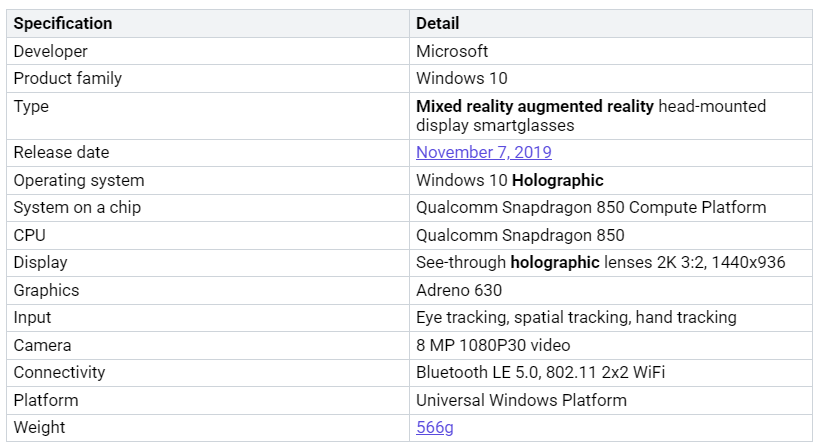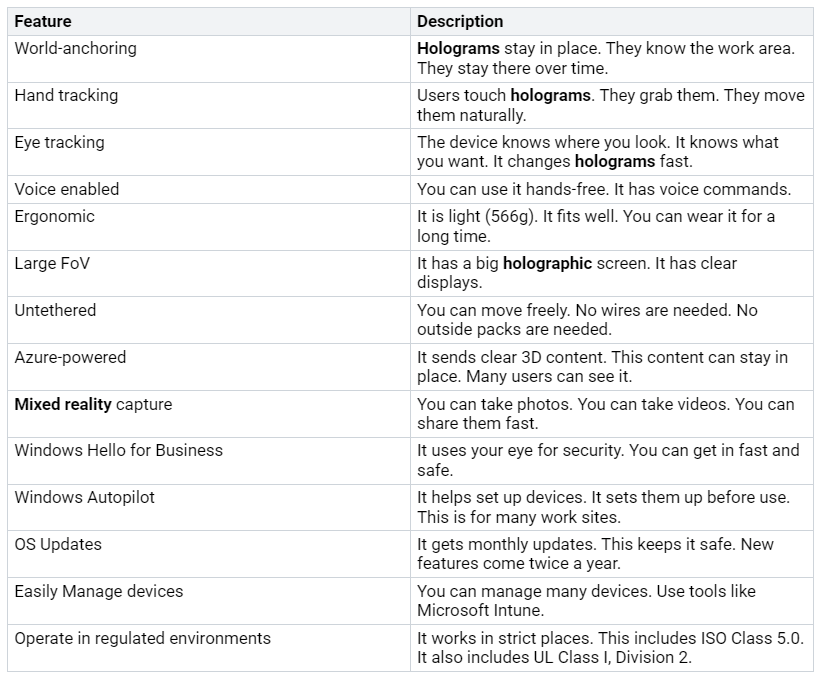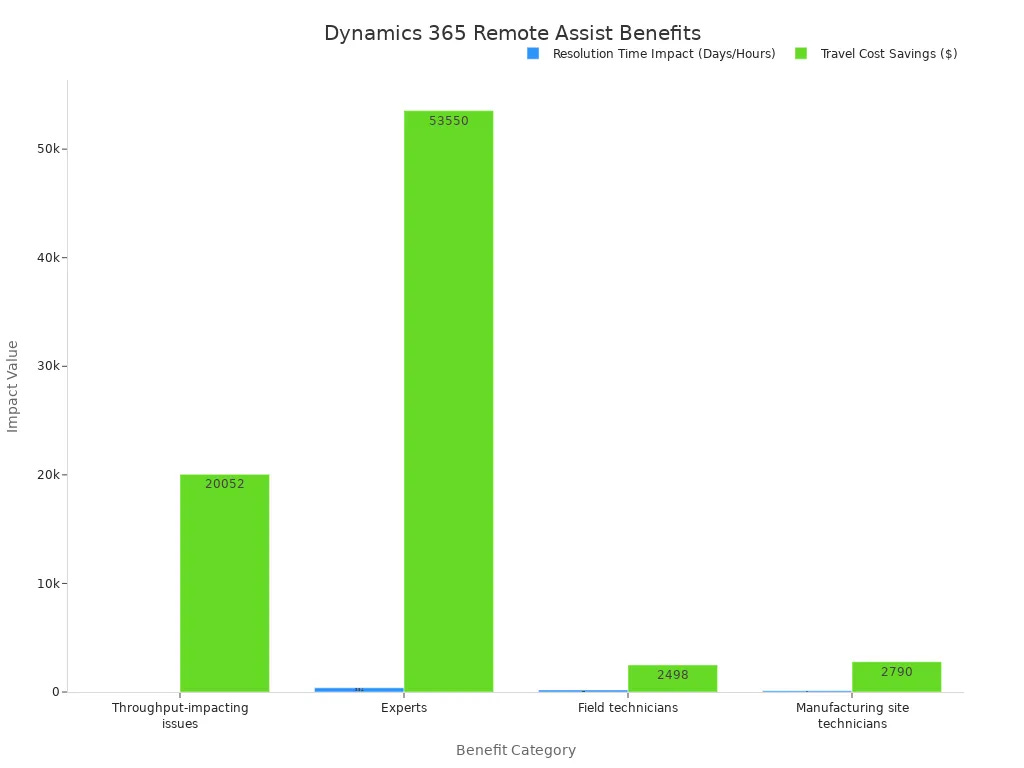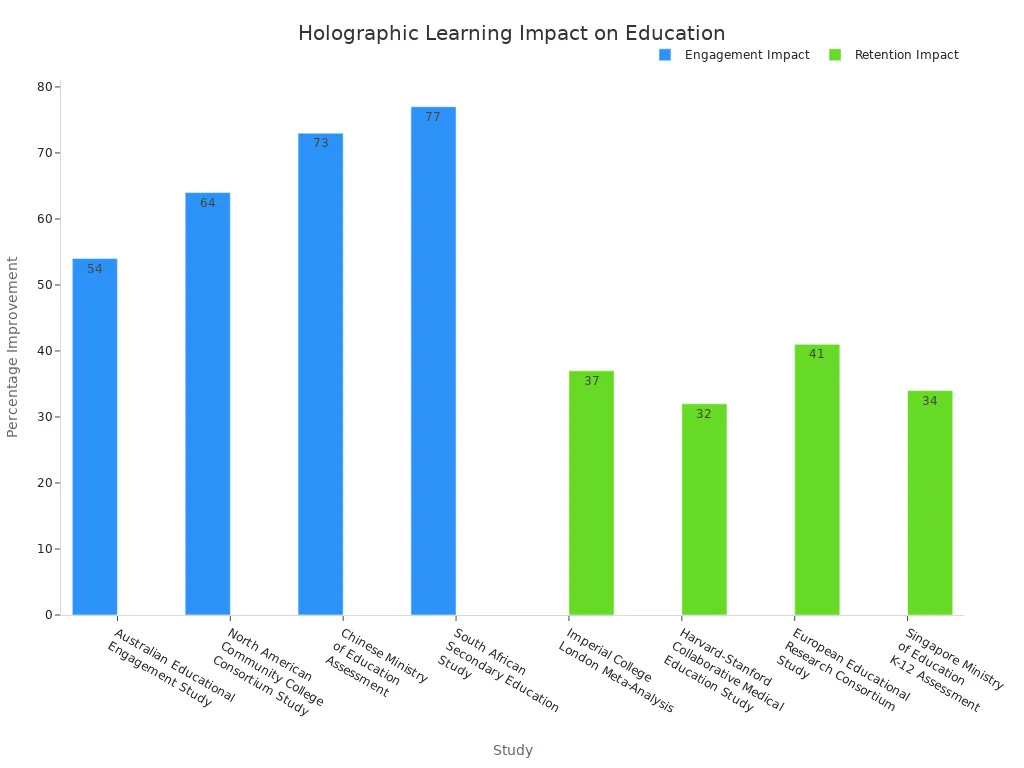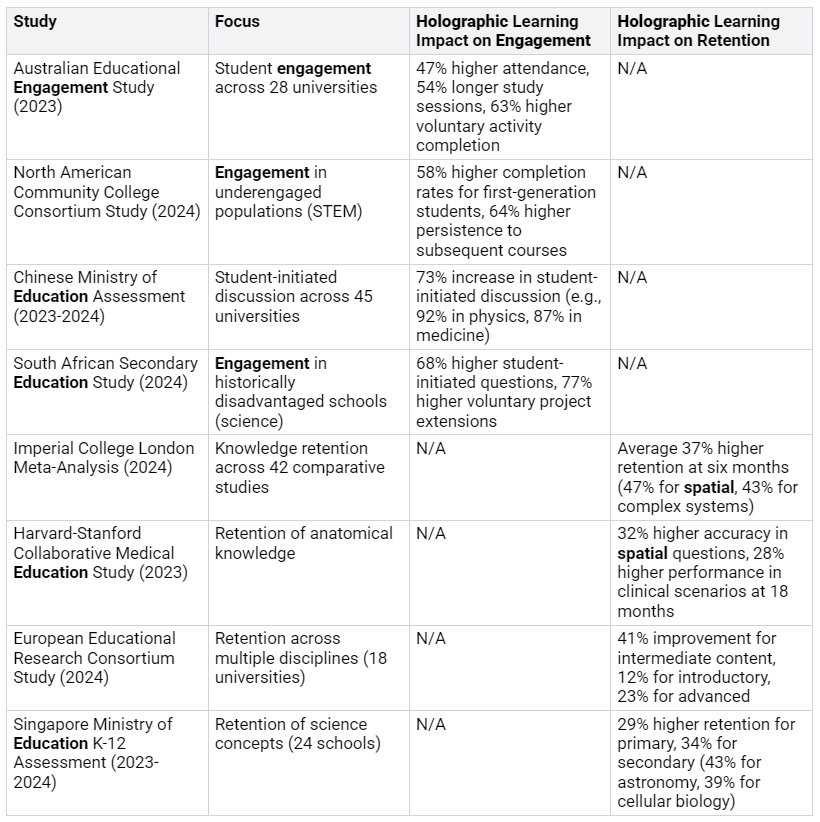Microsoft is a leader in mixed reality and holographic AI. These technologies mix digital and real worlds. They let us interact with 3D things easily. The mixed reality market was worth $6.44 billion in 2024. It will grow to $9.53 billion in 2025. This market is getting bigger. The holographic display market will be $5.1 billion by 2025. It offers a very real experience. Microsoft’s HoloLens gives a great augmented reality (AR) experience. HoloLens AR makes things feel real. This AR makes users more interested. HoloLens AR helps make a new reality. HoloLens AR puts digital holograms into the real world. The Holographic AI Digital Human Market is also growing. It will reach $2.21 billion in 2025. This blog looks at how Microsoft uses these things. It shows their practical uses and what they mean for the future. Microsoft’s new ideas make work better. They help people work together. They create real experiences. They use smart services, good hardware, and tools that work everywhere.
Key Takeaways
Microsoft is a leader. They mix digital and real worlds. This creates new experiences.
HoloLens 2 is their main device. It uses AI. It shows digital holograms. These appear in your real space.
Microsoft has tools. These include Dynamics 365 Guides and Remote Assist. They help workers. They make tasks easier. They also save money.
Holographic AI changes many areas. It helps with surgery. It helps with factory work. It helps with learning. It also helps with shopping.
Microsoft Mesh lets people share. They share hologram experiences. It connects users. They are in virtual spaces. This works across many devices.
Microsoft Mixed Reality and AI
Microsoft’s Mixed Reality
Microsoft says mixed reality blends worlds. It mixes physical and digital worlds. This technology creates new experiences. It combines AR and VR. Microsoft’s HoloLens is key. It brings digital things into your space. You can touch digital objects. It feels like they are real. This makes a new reality. HoloLens gives an AR experience. This AR makes your surroundings better. It is a strong mixed experience. HoloLens tech makes this happen.
AI in Holographic Experiences
AI makes holograms real. It makes them interactive. AI makes holograms look real. It uses AI for real-time computing. It also uses AI for rendering. Neural networks make 3D holograms fast. This is quicker than old ways. Deep learning makes digital images better. It looks at what is in the scene. This makes visuals better. This neural holography creates 3D objects fast. This makes AR more interesting. HoloLens uses this advanced AR.
AI also helps with talking. NLP helps avatars understand. They respond like people. They get feelings and context. CNNs make image recognition better. Avatars react to faces. They react to hand movements. Reinforcement learning helps avatars decide. They change based on feedback. They work well in new places. HoloLens uses this AI. It makes smooth AR. This AR is very strong.
HoloLens uses AI a lot. AI allows real-time talking. Avatars respond fast. This makes users more involved. Avatars can show feelings. They read faces and moods. This allows caring responses. Systems learn and get better. They change for users. Avatars do many jobs. They can be helpers. They can be teachers. They work in many areas. Holographic avatars feel real. They link digital and real worlds. AI also makes sound better. It checks environments. It changes sounds for movement. This makes sounds more real. HoloLens gives an AR experience. This AR is better with AI. This mixed reality feels real. Users interact with 3D things. This makes reality better.
Key Mixed Reality AI Applications
Microsoft has many mixed reality apps. These apps use AI. They help with main tasks. They make work better. They help people work together. This is true in many fields.
Microsoft HoloLens 2
The HoloLens 2 is Microsoft’s main augmented reality device. It is a computer. It shows holograms. It runs Windows 10 Holographic. This device has new features.
The HoloLens 2 uses AI for many things. It uses AI to know hand moves. It tracks eyes. It maps spaces. This lets it put holograms in the real world. It has clear lenses. It has 3D sound. It understands its surroundings. The HoloLens 2 has an AI chip. This chip is inside its Holographic Processing Unit (HPU). This chip uses Deep Neural Networks. It looks at pictures. It knows hand moves. It maps spaces. The HPU checks sensor data fast. This helps it know hand moves. It also helps it understand the space.
The HoloLens 2 has important features:
Enhanced Ergonomics: It is light. It feels balanced. A visor flips up. This lets you switch easily. You can go between mixed reality and the real world.
Immersive Field of View (FOV): It has a 52-degree view. This makes the view bigger. You can see larger holograms.
Eye and Hand Tracking Capabilities: It tracks your eyes. This makes it easy to use. It tracks your hands. You can move holograms naturally.
High-Resolution Visuals: It has 2K displays for each eye. This makes clear pictures. This is good for jobs needing exactness.
Voice Command Integration: It has voice control. You can use it hands-free. You can talk to holograms.
Holographic Remoting sends content fast. Developers can find examples. The HoloLens 2 gives a strong augmented reality experience. This experience makes digital things feel real.
The HoloLens 2 uses a Qualcomm Snapdragon 850. It has 4 GB of memory. It has 64 GB of storage. Its battery lasts 2-3 hours. It connects with Wi-Fi. It uses Bluetooth 5.0. It has sensors. These include accelerometers. It has gyroscopes. It has magnetometers. It has light sensors. It also has cameras. These track eyes and hands. This hololens tech makes it a top augmented reality device.
Dynamics 365 Guides
Dynamics 365 Guides uses mixed reality and AI. It helps workers on the job. It gives step-by-step hologram guides. This is for hard tasks. It makes work better. It lowers mistakes in factories.
Guides uses Copilot. Azure OpenAI Service powers it. Copilot has many features:
Point and Ask Guidance: Workers can point at a part. They can ask Copilot questions. They use normal talk. They use hand moves. Copilot knows the object. It gives answers. It often uses 3D models. It uses holograms for steps.
Spatial Content Generation: Copilot makes it easy. It creates mixed reality content. It manages it. It delivers it. It uses data from customers. This lowers the cost. It is for spatial content.
Step-by-Step Assistance: Copilot helps workers. It guides them through hard steps. It uses speech. It uses text. It uses 3D holograms. This makes things clear. It reduces redoing work.
On-demand Information: Copilot connects to sensors. It connects to work data. It connects to service records. It gives real-time info. This is about equipment. This helps fix problems. It uses AI help.
Expert Knowledge Integration: Copilot uses old notes from experts. It uses call notes. It guides new workers. This helps share knowledge. It makes work better.
These features help finish tasks faster. They make them more correct. They lower costs. Guides also makes workers safer. It makes them happier. It helps avoid mistakes. It helps avoid injuries. This makes safety better. It makes workers happier. It makes workers flexible. They can learn new skills fast. This helps businesses react fast. They can use new chances. This augmented reality app changes how workers learn. It changes how they do tasks.
Dynamics 365 Remote Assist
Dynamics 365 Remote Assist lets experts help workers. They help from far away. It uses AI. It knows objects. It adds smart notes. This gives real-time hologram help.
Remote Assist has big benefits:
Save on unnecessary travel costs: Experts can help from far. No need to visit sites.
Real-time Remote Support: It helps people work together fast. This makes work better. It avoids delays.
Improved Customer Experience: Problems get fixed faster. Less downtime means better service.
Remote Assist fixes issues five days sooner. This saves about $20,052 per issue. Experts save 384 hours a year. This saves $53,550 in travel. This is from 17 trips a year. Field workers fix things right the first time. This goes up by 10% for easy issues. It goes up by 40% for medium issues. They fix 75% of hard issues themselves. This saves $2,498 in travel. This is from 55 trips a year. It saves 188 hours. Factory workers check things 25% faster. They cut work for medium issues by half. They cut work for hard issues by 75%. This saves 124 hours a year. This is worth $2,790 per worker.
Remote Assist solves problems fast. It solves them right away. Technicians can fix service line issues. This includes setup. It includes upkeep. It includes checks. It includes machine repair. They show what they see to experts. This lowers costs. It avoids trips to customers. It cuts travel time. It cuts costs. This is through remote help. It uses videos. It uses pictures. It uses notes. This augmented reality solution makes service better.
Microsoft Mesh
Microsoft Mesh is an Azure platform. It lets people share hologram experiences. It works on many devices. It uses AI. It makes avatars. It has 3D sound. It has lasting digital copies.
Mesh lets users share hologram experiences. This makes working together better. It makes things more fun. It works on many devices. This includes HoloLens. It includes phones. This makes it easy for many to use. It helps teams work together fast. This is for teams in different places. Users can make their own avatars. This makes virtual talks more fun. It is built on Azure. This makes it safe. It can grow. It is reliable for users everywhere.
Kipman said, “In these shared experiences, the content is not in my device. It is not in my app. The holographic content is in the cloud. I just need special lenses. These let me see it.” This shows how Microsoft Mesh works. It helps share hologram experiences. It keeps content in the cloud. You can see it on many devices.
Microsoft Mesh uses AI. It makes very real avatars. Users upload a picture. An AI program makes an avatar fast. These avatars can move. They can gesture. They can show feelings. Built-in 3D sound makes it more real. It makes sounds seem to come from a place. This is as avatars move. Users hear voices. They hear noises. They come from the exact spot. This makes a very real experience.
Mesh’s open rules let developers make solutions. These solutions work with many devices. Supported devices include HoloLens 2. They include many virtual reality headsets. They include smartphones. They include tablets. They include PCs.
Mesh makes spatial maps. It mixes spatial info from many devices. It makes 3D models. It shares device views. This makes sure hologram content stays. It stays over time. It stays in space. It stays on devices. It gives everyone a common view. This is of the real world. It supports holographic rendering. Developers can choose. They can render locally. They can render remotely. This gives choices. It balances speed and quality. This allows constant hologram experiences. It works on different hardware. It allows many users to sync. This makes sure everyone shares context. It creates a common view of holograms. This is for all users. It is in a shared session. It does not matter what device they use. This mixed reality platform truly connects people. It connects them in digital places.
Holographic AI: How Industries Use It
Holographic AI changes many industries. It puts digital info into the real world. This makes new ways to work, learn, and talk.
Healthcare: Planning Surgeries
Holographic AI makes surgery planning much better. It helps doctors be very exact. AI looks at lots of surgery data. This data helps make special implants for patients. It also suggests the best ways to do surgery. This is for each patient’s body. Dr. Sanchez-Sotelo says a special headset shows holograms. These are 3D models of the patient and implant. This happens during surgery. He can change the image. He points out exact body parts. This helps place the implant. He calls it “Superman vision.” He can “see through the body.” He sees “what you’ll need to do.” This makes surgery faster. Implant placement is very accurate.
Special scans and 3D models turn patient images into detailed body models. This makes important details clear. These include where arteries are. It shows skull defect sizes. It shows how tumors relate. Dr. Coelho says her team can “do the whole surgery before we go to the operating room.” They practice their plan. They work with other experts. They use AR headsets. These show holographic images. They do full practice runs. The whole surgery team is there. This makes sure everyone knows what to do.
Mixed reality (MR) makes special 3D models for each patient. It shows inside the body in a real way. This lets doctors practice before surgery. Surgeons find the best ways to do things. They guess how surgery will turn out. MR has worked well in many surgeries. These include kidney, chest, brain, colon, and weight loss surgeries. MR puts holographic images or 3D things right into the surgeon’s view. This means no separate screens are needed. It makes sure digital and real info line up perfectly. Wearable MR devices, like the HoloLens, help find body parts better. They also help doctors think clearly. This makes planning before surgery easier. A study looked at 50 kidney surgeries. They used AR help. It showed MR makes these surgeries more successful. It is very helpful in clinics. This includes planning, guiding, talking, teaching, and patient talks. This augmented reality helps healthcare a lot.
Manufacturing: Design & Upkeep
Manufacturing companies use holograms. They make product design and upkeep better. Holograms make working together in 3D easier. Teams talk about and change holographic models. These are of machines or designs. This happens before making them. This makes decisions faster. Workers use holograms. They see detailed, real-time info about equipment. This makes repairs more exact and quicker.
For example, a HoloLens can show a digital copy of a machine. It appears on the factory floor. Workers see the machine’s inside parts. They are augmented reality overlays. This helps them understand hard assembly steps. It also guides them through upkeep. This AR reduces mistakes. It cuts training time. It makes manufacturing work better. The HoloLens gives a real experience to workers. They use digital things in their real world. This augmented reality tool helps manufacturing teams work better. It makes sure every step is exact. This manufacturing new idea changes how products are made and kept.
Education: Learning in a Real Way
Education gets a lot from holographic AI. It makes learning feel real. The University of Texas at Austin used holographic tech. Professor Steve Limberg taught students. He was a live, 3D image. This felt more real than video calls. He could see how students were doing. He saw their body language better. Holographic tech also helps with classroom practice. It makes learning more fun and real. Beyond teaching from far away, holographic tech adds to learning. It includes 3D guests. It has virtual trips for young students. Imperial College Business School had holographic speakers. Kits from LitiHolo let students make their own holograms. This helps make future hologram experts. It gives hands-on experience with the tech.
Holographic pictures turn classrooms into places to explore. Students use virtual animals in ocean places. They see history happen. This makes learning more interesting. Virtual trips let students see old buildings. They see old cities. They see different cultures. They can even see old animals like dinosaurs. This removes limits of where they are. Holographic pictures make students join in. Students use 3D virtual models. They can take apart a human body. They can practice medical steps. This makes them get involved. With practice and clear pictures, holographic AI helps students get hard ideas. Science students see how things move. They change things to see what happens. Holographic coding tools let students make virtual worlds. They learn coding skills. This helps them be creative. It helps them use new ideas. It helps them with tech. The HoloLens makes these augmented reality learning experiences possible. This AR tech changes education.
Here is how holographic learning affects how much students join in and remember:
Retail: Customers & Store Work
Holographic AI changes stores. It makes customers more interested. It makes store work better. H&M uses holographic tech. It lets customers try on clothes virtually. Shoppers scan a code. They pick a virtual model. It matches their body and skin. They see how clothes look. This happens before they buy. This makes shopping better. It shows products just for them. It helps them buy with confidence. This is a key part of a holographic retail platform.
Holographic AI makes shopping in stores feel real. This tech does not need special glasses. Shoppers easily see lifelike, 3D pictures. Stores use AI-powered holography. They change how products are shown. They change how customers interact. They make displays better. They give special experiences. This helps customers see products more clearly. AI-driven 3D and holographic tech makes shopping better. They show products in high detail. They make changes easy and clear. It moves from old displays to active, personal buys. These technologies, with AI, let you change things right away. They make the whole shopping trip better. This augmented reality in retail makes a new shopping world. The HoloLens could power such an augmented reality in ecommerce platform. This holographic fashion platform changes how people shop.
AEC: Seeing & Working Together
Mixed reality (MR) and holographic tech, like the HoloLens, help a lot in AEC. They help with seeing and working together. They bring 3D models out of screens. Users easily use and work with design info. This makes info easy for everyone to get. They look at designs in real 3D. No expert help is needed. This tech blurs the line. It is between design papers and the real world. It puts info on top of the real world. This means fewer mistakes in understanding. It gives instant visual feedback. This helps control work well. It extends the digital link. It puts business steps together. It makes talking better. This is for all parts of a project. It makes 3D info come alive. It lets many layers of info appear. They are holograms on the real world. This makes decisions more sure.
Many applications use holographic AI (Mixed reality) to make seeing and working together better in AEC. Autodesk Workshop XR makes a shared virtual space. It is for reviewing designs. AEC teams look at 3D models. They are full size. This is in a shared virtual world. Argyle is an AR application. It puts BIM with real building sites. Project managers and workers see BIM right on site. They use maps with context. They use holograms with lots of info. IrisVR’s Prospect looks at 3D models in VR. It helps with reviews. It helps with notes. It helps with talking to remote teams. It helps with safety training. Trimble’s Connect and FieldLink MR mixes HoloLens’s 3D holographic powers. It uses Trimble Connect’s cloud teamwork. Users put 3D models on physical sites. They work with them. They use hand moves and voice. This augmented reality solution makes building more effective.
Companies make holographic solutions. They make seeing and working together better in AEC. Argyle makes building sites richer. It has holograms always there. It gives up-to-date BIM in context. It turns buildings into spatial databases. AVATAR Partners (SimplifyXR) offers software without code. It quickly makes business mixed reality applications. It has AI/machine learning. It has remote teamwork. Campfire focuses on holographic teamwork. This is for design and engineering. It gives devices and applications. This is for teams all over the world. They work with 3D models. It is like sharing a central holographic projector. This AR tech helps reduce redoing work. It helps reduce mistakes. It finds design flaws. It finds building problems earlier. This means less costly changes. It makes projects finish faster. Faster design changes, checking on site, and solving problems. This leads to quicker project finish. This augmented reality changes the building world.
Impact and Future of Microsoft Holographic AI
Workflow Transformation
Microsoft’s AR and mixed reality tools change how people work. These tools make work better. They help people work together. They make things more efficient. For example, HoloLens helps workers. They see digital info in their real world. This AR experience makes hard tasks easier. Workers get more involved with their tasks. This mixed reality helps them finish jobs faster. They make fewer mistakes. HoloLens gives a full experience. It mixes digital and real worlds smoothly. This AR changes training and how things are done. It makes work more productive. HoloLens makes every AR interaction easy to use. This mixed reality helps solve problems in the real world. HoloLens gives a great AR experience.
Ethical Considerations
Holographic tech looks more real. This brings up new questions about right and wrong. These questions are about privacy. They are about how people interact. We must think about these things carefully. This makes sure new ideas make lives better. They should not cause problems. A big problem is bias in AI content. AI learns from data. This data can have biases. This can spread these biases. We need ways to find bias. We need to fix it. This makes sure AI systems are fair. Using personal data for AI raises privacy worries. We must use data carefully. Strong security is very important. Rules must balance new ideas with protecting rights.
AI can be used wrongly. It can make fake news. It can make deepfakes. We need ways to stop this. Microsoft’s Video Authenticator helps. Intel’s FakeCatcher also helps. Using these tools in AR is key. This makes sure content is real. It fights wrong information. Proto Hologram cares about right and wrong. They focus on fairness. They focus on being clear. They focus on being responsible for their Protobot system. They watch it and make it better. This helps fix biases. This builds trust. It protects technology. HoloLens is an AR device. It must also follow these rules. This makes sure AR has a good future. This AR experience must be trusted.
Future Innovations
The future of AR and holographic AI looks good. Quantum computing and holographic ideas will mix. This will create quantum holographic AI (QHAI). This new area can do more than normal computers. It uses quantum bits for many tasks at once. Holography stores and gets data fast. This makes a full experience. Complex holographic AR systems are part of QHAI. They let us do interactive simulations. This greatly helps train models in virtual places. HoloLens will likely use these new things. This will give an even better AR experience. This will make digital and real worlds mix even more. Future AR will give a great experience.
Microsoft greatly changes mixed reality and holographic AI. Its apps help many businesses. They make things better. They help people work together. They make learning fun. These are real tools. They are not just future ideas. They change how we work. They change how we learn. They change how we talk to each other. Microsoft’s mixed reality will keep growing. Its holographic AI will be used more. This augmented reality (AR) will change our world. We will see more AR every day. This AR will make our world better. This AR will mix digital and real worlds. This AR will make new kinds of reality. This AR will make users more interested. This AR will change how we see things. This AR will be part of our daily life. This AR will shape the future.
FAQ
What is Microsoft’s mixed reality?
Microsoft’s mixed reality mixes real and digital worlds. It makes new experiences. Users touch digital things. They feel real. This tech makes reality better. It mixes augmented reality (AR) and virtual reality. This new reality changes how we interact.
How does AI improve holographic experiences?
AI makes holograms look real. They are interactive. It uses neural networks. This makes 3D fast. Deep learning makes digital pictures better. AI helps avatars understand speech. They react to movement. This makes reality more real. It shapes our digital world.
What is HoloLens 2?
HoloLens 2 is Microsoft’s main augmented reality (AR) device. It is a computer. It shows holograms. It puts them in the real world. It uses AI. This is for hand moves. It is for eye tracking. This device changes how people use digital things. It is in their real world. It gives a new view of reality.
How do industries use holographic AI?
Industries use holographic AI in many ways.
Healthcare uses it. This is for surgery plans.
Manufacturing uses it. This is for design. It is for upkeep.
Education uses it. This is for real learning.
Retail uses it. This is for customer experiences. This augmented reality (AR) tech changes how we see things. It changes how we interact. It reshapes business reality.
What is Microsoft Mesh?
Microsoft Mesh is an Azure platform. It lets people share hologram experiences. It works on many devices. It uses AI. This is for avatars. It is for 3D sound. Mesh makes a shared digital reality. It connects people. This is in virtual spaces. It makes working together better. This platform offers a new kind of augmented reality (AR).


